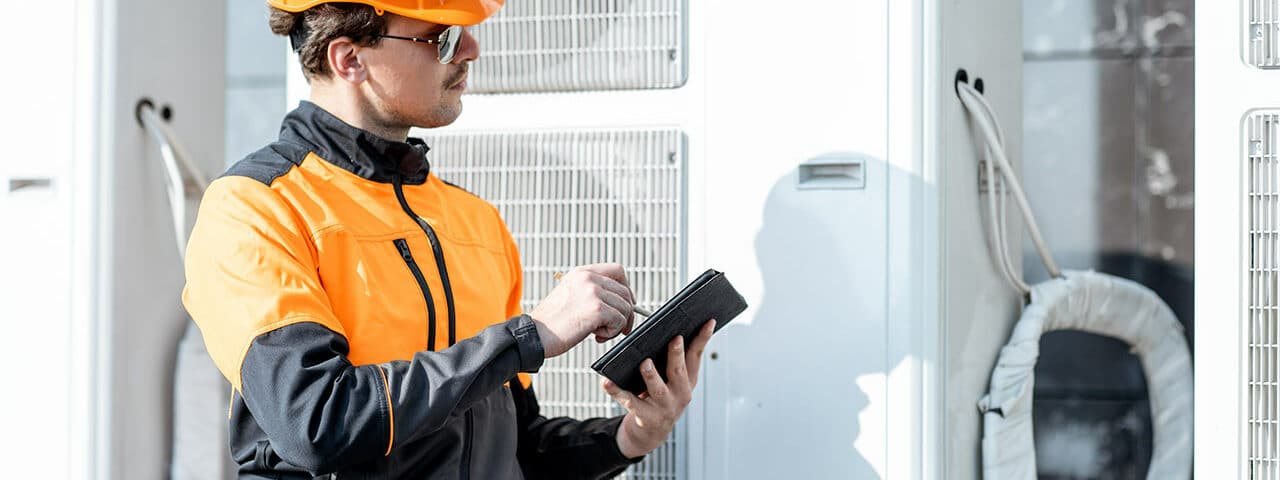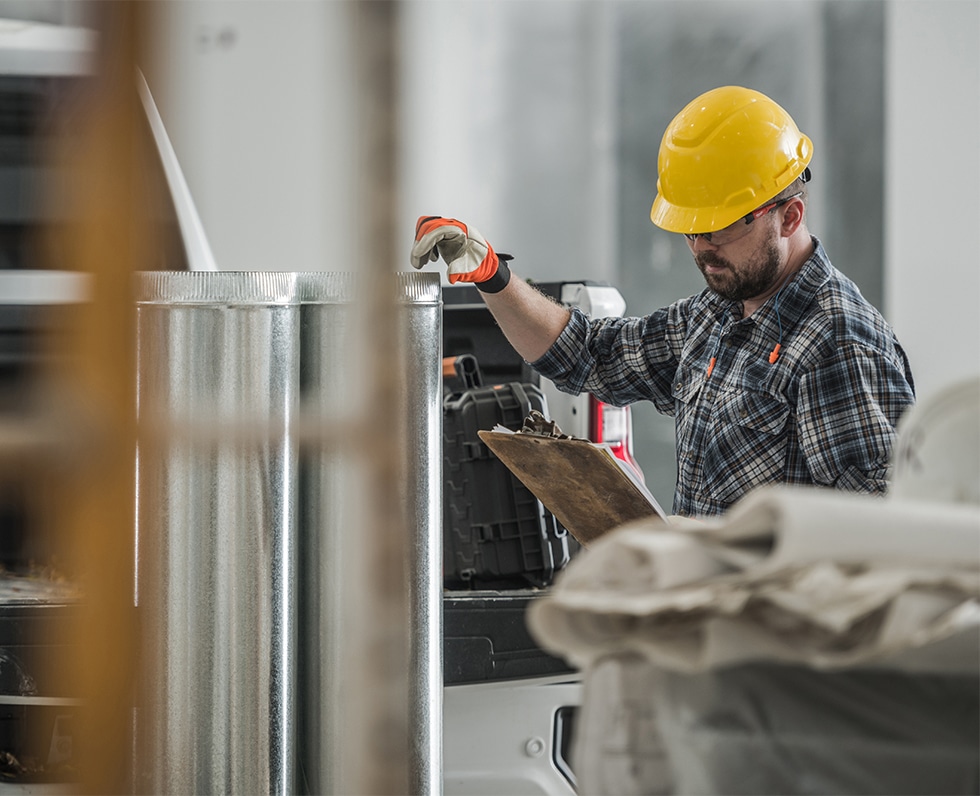Geothermal systems transfer heat from the earth into your home or business in the winter and transfer it back in the summer to keep you at a comfortable temperature year round. Geothermal offers heating, cooling, and hot water in a system that is cost saving, reliable, energy efficient, and environmentally sound. Geothermal can be used in residential and commercial applications, in new construction as well as in existing homes or businesses. Geothermal systems are highly efficient technology that are fast becoming the most reliable and competitive heating & cooling systems available. 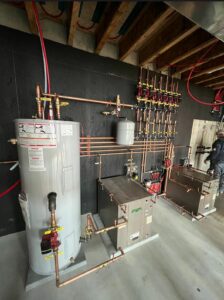
There are three major components to a geothermal system. A geo-exchange well, ground source heat pump, and a distribution system. Often times consumers have a hard time understanding which of the multiple options is best for them. Therefore we will talk a little about all of these in detail so that you will better understand what options may make the most sense for you.
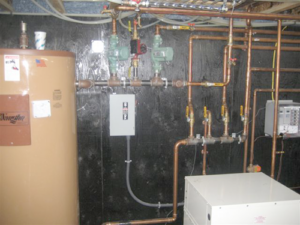
There are three different types of geo-exchange wells to consider.
Closed Loop
A closed loop system is simply a borehole in which two high density polyethelene pipes with a U bend at the botton are installed with a thermally enhanced grout the length of the borehole. This design typically consists of multiple 200′ to 400′ wells. With this type of geo-exchange well we are strictly reliant on conductive heat transfer which is the natural flow of heat energy from the earth through the thermally enhanced grout, high density polyethelene tubing and into a glycol/water solution. This is the most common type of geo-exchange well across the United States. However, this is purely in relation to geology. In Maine, New Hampshire, Vermont, and much of New England closed loop is not as economical as some other options.
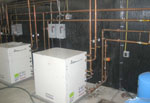
● There is no issue with water quality
● Sediment will not be a problem with this system.
Standing Column Well
A standing column well is constructed in the same manner as conventional drilled water well with a submersible pump system. This type of geo exchange well also has conductive heat transfer characteristics. Heat energy transfers from the bedrock directly into the column of water. Then the column of water is circulated into the home through the heat pump in which it extracts heat energy, and then returns this colder water back to the earth where it is reheated by the earth’s crust. This type of heat transfer is more efficient than the closed loop for the heat does not have to go through resistant materials such as the grout, HDPE pipe and into the glycol/water solution.
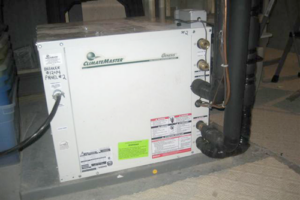
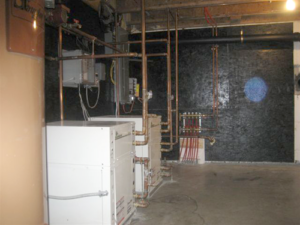
● Can use same well for drinking water as for the geothermal system. (saves on up front cost!!)
● Heat pumps can be sized smaller because of warmer incoming water temperature. (about 20% smaller)
● Boreholes can be drilled shallower which saves on upfront costs
Open Loop Well
An open loop well is very much the same as a standing column. The only difference is that the open loop can be used in more applications, though most common with the standing column.
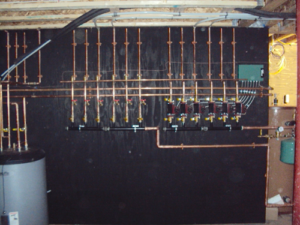
Another example of an open loop would be to discharge the water to some other sort of dry well. You would want to make sure this is in an area that will accept the amount of water you wish to discharge. Would not recommend this design if there is a chance of contaminating another water source or discharging of water into any Lakes, Streams, Ponds etc without MDEP’s approval.
The open loop well is the most efficient and least expensive of options.

